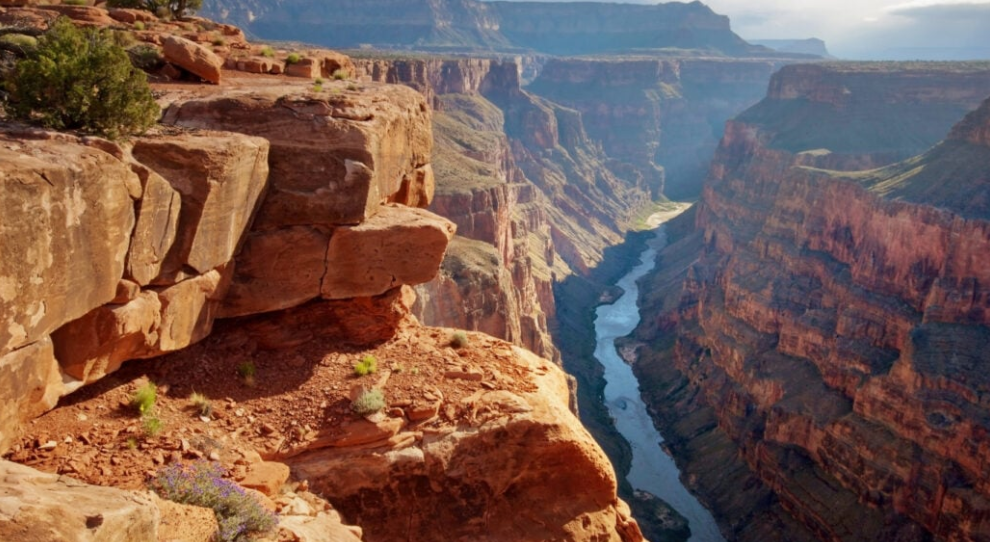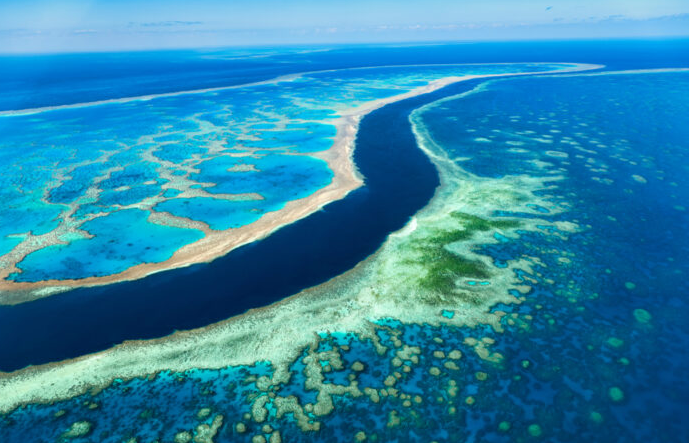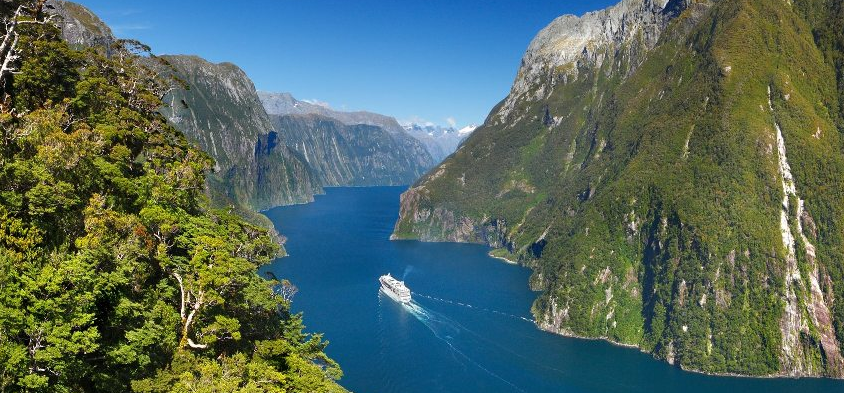The world is blessed with an abundance of breathtaking landscapes, each offering its own unique blend of natural beauty, wonder, and awe-inspiring scenery. From towering mountains to cascading waterfalls, vast deserts to lush forests, the diversity of landscapes on our planet is truly remarkable. In this comprehensive guide, we embark on a journey to discover the top six best landscape places in the world, exploring their captivating beauty, cultural significance, and the awe they inspire in all who behold them.
The Grand Canyon, United States

The Grand Canyon, located in the state of Arizona, United States, is one of the most awe-inspiring natural wonders on Earth. Carved by the mighty Colorado River over millions of years, the Grand Canyon stretches for approximately 277 miles (446 kilometers) and reaches depths of over a mile (1.6 kilometers) at its deepest point. This geological masterpiece showcases a stunning array of colorful rock layers, towering cliffs, and breathtaking vistas that attract millions of visitors from around the globe each year.
The formation of the Grand Canyon dates back over 6 million years, with the Colorado River slowly eroding the rock layers and creating the dramatic landscape we see today. The canyon’s walls reveal a fascinating geological history, with rock layers dating back millions of years and offering insights into the Earth’s ancient past. Visitors to the Grand Canyon can explore the canyon’s rim via scenic overlooks, hiking trails, and guided tours.
Popular viewpoints such as Mather Point, Yavapai Point, and Desert View offer panoramic vistas of the canyon’s vast expanse, providing unparalleled opportunities for photography and sightseeing. For the more adventurous, opportunities abound for hiking, rafting, and camping within the canyon itself. Trails such as the South Kaibab Trail and the Bright Angel Trail offer stunning views and access to the canyon’s inner depths, while river rafting trips along the Colorado River provide a unique perspective on the canyon’s sheer cliffs and rugged terrain.
Beyond its natural beauty, the Grand Canyon holds deep cultural and spiritual significance for indigenous peoples, including the Havasupai, Hualapai, Navajo, and Hopi tribes. These tribes have lived in and around the canyon for thousands of years, maintaining a rich cultural heritage and connection to the land.
In recognition of its immense natural and cultural value, the Grand Canyon was designated a UNESCO World Heritage Site in 1979, ensuring its preservation for future generations to enjoy. Whether marveling at its sheer size and grandeur, exploring its hidden depths, or simply gazing out at its vast expanse, the Grand Canyon offers an unforgettable experience that leaves a lasting impression on all who visit.
The Great Barrier Reef, Australia

The Great Barrier Reef, located off the coast of Queensland, Australia, is the largest coral reef system on Earth and one of the most biodiverse ecosystems in the world. Stretching over 2,300 kilometers (1,430 miles) along the northeast coast of Australia, the Great Barrier Reef is composed of thousands of individual reefs and islands, forming a vast and intricate network of marine life. Home to a stunning array of coral species, fish, marine mammals, and other marine creatures, the Great Barrier Reef teems with biodiversity and is renowned for its vibrant colors and intricate ecosystems.
The reef provides habitat for over 1,500 species of fish, 400 species of coral, and countless other marine species, making it one of the most important marine ecosystems on the planet. The Great Barrier Reef is also a UNESCO World Heritage Site, recognized for its outstanding universal value and ecological significance. It is considered one of the Seven Natural Wonders of the World, attracting millions of visitors each year who come to snorkel, dive, and explore its underwater wonders.
Visitors to the Great Barrier Reef can experience its beauty and biodiversity firsthand through a variety of activities, including snorkeling, scuba diving, glass-bottom boat tours, and helicopter flights. Popular destinations along the reef include the Whitsunday Islands, Cairns, Port Douglas, and the Outer Reef. In addition to its ecological importance, the Great Barrier Reef holds cultural significance for Indigenous Australian communities, who have lived along its shores for thousands of years.
These communities have a deep connection to the reef and its marine life, with traditional practices and stories passed down through generations. Despite its natural beauty and ecological importance, the Great Barrier Reef faces numerous threats, including climate change, pollution, overfishing, and coastal development. Rising sea temperatures and ocean acidification pose significant risks to the reef’s delicate coral ecosystems, leading to coral bleaching and a decline in coral cover.
Efforts are underway to protect and conserve the Great Barrier Reef, including marine protected areas, coral reef monitoring programs, and initiatives to reduce pollution and carbon emissions. By raising awareness, promoting sustainable tourism, and implementing conservation measures, we can help preserve this natural treasure for future generations to enjoy.
The Amazon Rainforest, South America

The Amazon Rainforest, often referred to as the “Lungs of the Earth,” is the largest tropical rainforest in the world, covering approximately 5.5 million square kilometers (2.1 million square miles) across nine countries in South America, including Brazil, Peru, Colombia, and Venezuela. Renowned for its unparalleled biodiversity and ecological significance, the Amazon Rainforest plays a crucial role in regulating the Earth’s climate, storing carbon, and supporting a vast array of plant and animal species.
This expansive and biodiverse ecosystem is home to an estimated 10% of the world’s known species, including millions of species of insects, tens of thousands of plants, and thousands of species of birds, mammals, reptiles, and amphibians. From iconic species like jaguars, sloths, and anacondas to lesser-known creatures like poison dart frogs and leaf-cutter ants, the Amazon Rainforest teems with life at every level of the food chain.
The Amazon Rainforest is characterized by its dense canopy of trees, towering emergent trees, and winding rivers, which provide habitat for an astonishing variety of wildlife. It is also home to indigenous peoples who have lived in harmony with the forest for thousands of years, relying on its resources for food, shelter, and medicine.
In addition to its ecological and cultural significance, the Amazon Rainforest plays a crucial role in the global climate system. It acts as a carbon sink, absorbing and storing vast amounts of carbon dioxide from the atmosphere, thereby helping to mitigate climate change. The forest also generates a significant portion of the world’s oxygen, earning it the nickname “Lungs of the Earth.”
Despite its immense value, the Amazon Rainforest faces numerous threats, including deforestation, agricultural expansion, logging, mining, and infrastructure development. These activities not only destroy precious habitat and biodiversity but also contribute to greenhouse gas emissions, biodiversity loss, and environmental degradation on a global scale.
Efforts to conserve and protect the Amazon Rainforest are ongoing, with initiatives ranging from protected areas and indigenous land rights to sustainable development projects and reforestation efforts. However, the future of the Amazon Rainforest remains uncertain, and urgent action is needed to address the underlying drivers of deforestation and ensure the long-term survival of this vital ecosystem.
Fiordland National Park, New Zealand

Fiordland National Park, located in the southwest corner of New Zealand’s South Island, is a pristine wilderness area renowned for its breathtaking fjords, rugged mountains, and ancient forests. Covering an area of over 12,500 square kilometers (4,830 square miles), Fiordland National Park is the largest national park in New Zealand and a designated UNESCO World Heritage Site.
The park’s most iconic feature is its collection of fjords, carved by ancient glaciers over millions of years. Among the most famous are Milford Sound, Doubtful Sound, and Dusky Sound, each offering its own unique blend of dramatic cliffs, cascading waterfalls, and serene waters. These fjords are best explored by boat or kayak, allowing visitors to fully appreciate their grandeur and beauty from the water.
In addition to its fjords, Fiordland National Park boasts a diverse range of landscapes, including snow-capped mountains, pristine lakes, and dense rainforests. The park is home to a wealth of biodiversity, with native flora and fauna adapted to its rugged terrain and challenging climate. Endangered species such as the kakapo (a flightless parrot) and the takahe (a large, flightless bird) find refuge within the park’s boundaries, while ancient trees such as the southern beech and rimu dominate the forest canopy.
Fiordland National Park offers numerous opportunities for outdoor recreation and adventure. Hiking trails such as the Milford Track, Kepler Track, and Routeburn Track are world-renowned for their stunning scenery and challenging terrain, attracting trekkers and nature enthusiasts from around the globe. Visitors can also enjoy activities such as fishing, kayaking, scenic flights, and wildlife spotting, immersing themselves in the natural beauty of this remote wilderness area.
The Maori people have a deep cultural connection to Fiordland National Park, with ancestral ties to the land that date back centuries. Maori legends and traditions are woven into the fabric of the park’s landscape, adding an extra layer of cultural significance to its natural wonders. Guided tours led by Maori guides offer insights into the park’s cultural heritage, providing visitors with a deeper understanding of its rich history and spiritual significance.
Efforts to conserve and protect Fiordland National Park are ongoing, with initiatives focusing on sustainable tourism, environmental preservation, and indigenous stewardship. By promoting responsible travel practices, preserving fragile ecosystems, and fostering collaboration between stakeholders, we can ensure that Fiordland National Park remains a pristine wilderness area for generations to come.
The Sahara Desert, Africa

The Sahara Desert, located in North Africa, is the largest hot desert in the world, covering an area of approximately 9.2 million square kilometers (3.6 million square miles). Spanning across multiple countries, including Algeria, Chad, Egypt, Libya, Mali, Mauritania, Morocco, Niger, Western Sahara, Sudan, and Tunisia, the Sahara is a vast expanse of sand dunes, rocky plateaus, and arid plains. Despite its harsh and inhospitable environment, the Sahara Desert is home to a surprising array of life, adapted to survive in extreme conditions.
From desert-adapted plants like acacia trees and date palms to animals such as camels, fennec foxes, and desert monitor lizards, the Sahara supports a unique ecosystem shaped by its extreme climate and sparse vegetation. One of the most iconic features of the Sahara Desert is its towering sand dunes, which can reach heights of over 180 meters (590 feet) and stretch for kilometers across the landscape. These vast expanses of sand create a mesmerizing and ever-changing landscape, shaped by the wind and shifting sands.
Despite its reputation as a barren wasteland, the Sahara Desert holds deep cultural significance for the people who call it home. Nomadic tribes such as the Tuareg, Berbers, and Bedouins have traversed its vast expanse for centuries, relying on their intimate knowledge of the desert to survive. Traditional practices such as camel herding, desert agriculture, and oasis living have sustained these communities for generations, creating a rich tapestry of cultural heritage and resilience in the face of adversity.
In addition to its cultural importance, the Sahara Desert plays a crucial role in regulating the Earth’s climate and atmospheric circulation patterns. Its vast expanse of sand and rock absorbs and reflects solar radiation, influencing regional and global weather patterns. The desert also acts as a source of dust storms, which can transport nutrient-rich dust particles across continents and oceans, affecting ecosystems and climate systems around the world.
Despite its natural beauty and cultural significance, the Sahara Desert faces numerous threats, including desertification, climate change, overgrazing, and resource extraction. These activities contribute to soil erosion, loss of biodiversity, and degradation of fragile desert ecosystems, posing challenges for both human communities and the environment.
The Swiss Alps, Switzerland

The Swiss Alps, nestled in the heart of Europe, are a majestic mountain range renowned for their stunning beauty, pristine landscapes, and world-class recreational opportunities. Stretching across Switzerland and neighboring countries such as France, Italy, Austria, and Liechtenstein, the Swiss Alps are characterized by towering peaks, glistening glaciers, and picturesque alpine villages. At the heart of the Swiss Alps lies the iconic Matterhorn, one of the most famous mountains in the world.
With its distinctive pyramidal shape and towering summit, the Matterhorn has long captivated mountaineers, adventurers, and nature lovers alike. Nearby, other notable peaks such as the Eiger, Jungfrau, and Mont Blanc offer equally breathtaking vistas and opportunities for outdoor exploration. The Swiss Alps are a paradise for outdoor enthusiasts, offering a wide range of recreational activities year-round. In winter, the Alps become a playground for skiing, snowboarding, and snowshoeing, with world-class ski resorts such as Zermatt, St. Moritz, and Verbier attracting visitors from around the globe.
In summer, the Alps offer endless opportunities for hiking, mountain biking, rock climbing, and paragliding, with scenic trails and alpine meadows providing a stunning backdrop for outdoor adventures. Beyond its recreational offerings, the Swiss Alps are also home to a rich cultural heritage and traditional way of life. Alpine villages such as Grindelwald, Wengen, and Zermatt exude charm and hospitality, with their quaint chalets, flower-bedecked balconies, and cozy mountain lodges providing a warm welcome to visitors.
Local traditions such as yodeling, alphorn playing, and traditional festivals offer insights into the unique Alpine culture and way of life. The Swiss Alps are also renowned for their ecological importance, serving as a vital habitat for alpine flora and fauna. Endangered species such as the ibex, chamois, and golden eagle call the Alps home, while rare alpine plants such as edelweiss and gentian add splashes of color to the rugged landscape.
In addition to their natural beauty and recreational opportunities, the Swiss Alps are also a key driver of Switzerland’s tourism industry and economy. Millions of visitors flock to the Alps each year to enjoy its pristine landscapes, outdoor activities, and cultural attractions, supporting local businesses and communities in the process.
Conclusion
In conclusion, the world is blessed with an abundance of stunning landscapes, each offering its own unique blend of natural beauty, wonder, and awe-inspiring scenery. From the towering cliffs of the Grand Canyon to the crystal-clear waters of the Great Barrier Reef, these top six landscape places represent the pinnacle of natural splendor on our planet. Whether exploring their rugged terrain, marveling at their vibrant biodiversity, or simply soaking in their breathtaking vistas, these landscapes offer unforgettable experiences that inspire and enchant all who behold them. As we continue to cherish and protect these precious landscapes for future generations, may we always remember the profound beauty and importance of our natural world.